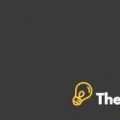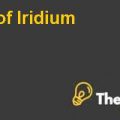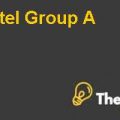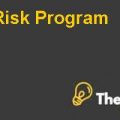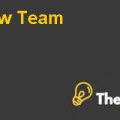Introduction of Owens and Minor:
George glimmer Minor Jr., was a wholesale drug salesman and in 1882, he established the company named Owen & minor in the medical health care industry. His family was renowned in practicing healthcare services. The company was dealing in retailing and wholesale of sundries, window glasses, paints and other line of product by filling prescriptions. In 1956 the company put in its first automated order system and in end of the 1960’s two acquisitions were made under the product line of medical and surgical supplies. The first Initial Public Offering was made in 1971 and during this year Owen expanded its business in ten states within medical and surgical product line through acquisitions.
The company’s income source was replaced from wholesale drug to medical & surgical supplies, which contributed a large portion of sale. The company sought to grow in sale from $367million to $1billion by the year 1990. In the same year the company adopted the long-term strategy to improve its profit margin and productivity trough supply chain partnership.
Case Background:
In 1996, Jose Valderas heard the news; that the Ideal Health System was putting the bid amounted $3 million dollar for the annual medical and surgical supplies contract. From this news; Valderas was concerned about getting this contract by bidding the lower price. In the industry of medical and surgical supplies, large amount of contract wasn’t possible due to the consolidations. For it Valderas was the opportunity to get this contract, because this contract was previously held with the Owens competitor Atlantic health Care. Atlantic Health Care was the entity of the Medical supply manufacturer which had higher margin of sales. This higher margin of sales allows Atlantic to offer supplies at lower prices. These rates would persuade the Owen to offer supplies at lower prices and would bring loss with it.
Problem Statement:
Valderas knew that if company changes its cost system then the following problem will occur:
Company was introducing the Activity based costing to improve the costing criteria but it will lose its customers. For that Valderas wanted to evaluate the current costing system with the new activity based costing. For this purpose the analysis were made on the following below:
Analysis:
The following analysis is made below:
In the medical and surgical industry, services rendered from the distributors to manufacturers were, the inventory control management and the cost reduction consultancy. The services changed with time and customers wanted the services at lower cost because they were gaining lower profit margin on the services they provided. The Owen was adding the value for their services through remain in the surgical and medical industry.
The cost system they were using had impact on customers in a way that whenever the customer wanted the product, Owens distributors added the cost plus margin in it. These distributors tell their customers that they can’t lower the prices of the product because they are getting it at cost plus margin from the manufacturer. In result from the cost plus pricing the customer were avoiding to buy the medical & surgical equipment from suppliers and distributors as they were making order directly to the manufacturers.
The Activity based costing was effective in reducing the cost of products not only for the OWEN but also for its customers. It also helps customers to order only those products that were in need. If any of the customers wanted to get the higher services then customer has to pay for that. Activity based costing was able to satisfy customers to optimize their services and it also reduced the costs. The cost matrix was designed on the basis of the two cost drivers. First driver was the number of lines per month and second was the numbers of orders per month. Each activity was driven on these cost drivers. In the Exhibit 4 and 5 all the cost included under the purchase order per month and the line order per month cost included all the costing under the line order costs. In the Matrix, its cost was not included because of the complexity. If these costs were included then it should be included in the basis of per unit cost which wasn’t identical to different cost. The activity based costing was not successfully implemented because at that time Ideal had the internal costing system, which was linked with the cost-plus percentage pricing and also the Electronic Data Input System wasn’t implemented in the Ideal hospital. To resolve these problems Owen offered consultancy services to Ideal for conversion of the activity costing into cost-plus costing. Owen’s customer who adopted this costing system was those who wanted to cut down those services and ordering cost which they did not ordered. In the industry, the activity costing was difficult for Owen’s rivals to adopt because if they wanted to adopt it then first they had to analyze the cost drivers which Owen adopted. If they wanted to adopt the activity costing then they would also adopt the advanced technology and this technological advancement was time consuming to implement in short period of time. The only risk existed for the Owen & Minor Company was the more customers, because customers would only order those products which were in demand................
This is just a sample partial case solution. Please place the order on the website to order your own originally done case solution.
Visionary manager for Owens & Minor (O & M), the major national medical and surgical distribution company, called for help and the cost of the logistics managers to develop innovative pricing schedule based on the client, not the price of the product, as the existing cost-plus pricing structure made it impossible for O & M in the price of the service properly. The case also explores the resistance to its customers the new proposal. "Hide
on VG Narayanan, Lisa Brem Source: HBS Premier Case Collection 17 pages. Publication Date: February 14, 2000. Prod. #: 100055-PDF-ENG


